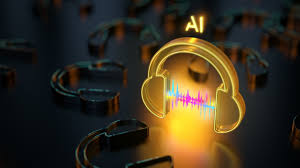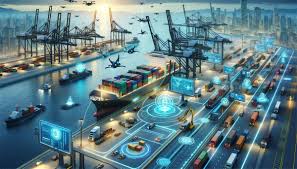Introduction to AI and its Role in Creative Industries
Artificial Intelligence is more than just a buzzword; it’s transforming the very fabric of creative industries. Imagine algorithms crafting stunning visual art or composing melodies that tug at your heartstrings. The impact of AI on creativity stretches from traditional forms to groundbreaking new genres, reshaping how we think about art and music.
As technology advances, artists and musicians are tapping into AI’s potential to enhance their work and push boundaries. This fusion opens up exciting possibilities while also raising important questions about authenticity and the role of human creativity in an age dominated by machines. Dive into this exploration as we unravel the intricate relationship between AI, art, and music in today’s dynamic landscape.
AI in Art: The Rise of Generative Art and Automated Creations
 Generative art is transforming the landscape of creativity. Artists are now collaborating with algorithms to create stunning visuals that push boundaries.
Generative art is transforming the landscape of creativity. Artists are now collaborating with algorithms to create stunning visuals that push boundaries.
With AI, computers analyze vast amounts of data. They learn styles, techniques, and patterns from renowned artists across history. This knowledge fuels unique creations that blend human imagination with machine efficiency.
Automated tools allow anyone to become an artist. Platforms powered by AI enable users to generate artwork simply by inputting parameters or keywords. The result? A diverse range of pieces—from abstract designs to intricate portraits—crafted in seconds.
Critics argue this diminishes traditional artistry, but supporters see it as a new form of expression. Generative art invites exploration and experimentation while questioning the very nature of creativity itself.
As technology evolves, so does our understanding of what art can be—a dialogue between human intent and algorithmic capability.
AI in Music: From Composition to Performance
AI is transforming the music landscape in exciting ways. Algorithms can analyze vast amounts of data, learning from a wide array of genres and styles. This capability allows AI to compose original pieces that mirror human creativity.
From electronic beats to orchestral symphonies, AI-generated music spans various formats. Tools like OpenAI’s MuseNet or Amper Music enable artists to collaborate with machines, creating unique soundscapes effortlessly.
Performance too has evolved. AI systems are now capable of generating real-time accompaniment for live musicians. Imagine an improvisational duo where one partner is a sophisticated algorithm responding instantaneously.
Yet, this integration raises questions about artistry and originality. Can we truly consider an AI composition as “music”? As machine-made melodies fill our playlists, it challenges traditional notions of what it means to create art in music today.
The Debate on Authenticity and Creativity in AI-Generated Content
The rise of AI in creative industries has sparked intense discussions about authenticity. Can a machine truly create? Or is it simply remixing existing ideas?
Critics argue that AI lacks the emotional depth and intention behind human creativity. They believe art should convey personal experiences and sentiments, something an algorithm cannot replicate.
On the flip side, supporters claim that AI can enhance creativity by providing new tools for exploration. It opens doors to styles and methods previously unimaginable.
As generative art gains traction, questions arise: What constitutes originality when machines are involved? Is there still value in a piece created without human touch?
This tension between tradition and innovation continues to shape perceptions of creativity in our digital age. The lines blur as technology evolves, challenging long-held beliefs about what makes art meaningful.
The Relationship Between Humans and AI in Creative Industries
The relationship between humans and AI in creative industries is evolving rapidly. Artists, musicians, and creators are discovering new ways to collaborate with technology.
AI offers tools that enhance creativity rather than replace it. For instance, artists can use algorithms to generate unique patterns or color palettes. Musicians might employ AI for composing melodies or even crafting entire songs.
This partnership reshapes the creative process. It encourages experimentation and pushes boundaries that were once thought impossible. Creators are now blending human intuition with machine precision.
However, this collaboration can feel complex. There’s a sense of curiosity mixed with apprehension about where human input ends and AI contribution begins. The dialogue around authorship becomes increasingly nuanced as both parties leave their mark on the final product.
It’s a dance of innovation that fosters growth within these fields while raising questions about identity and originality in art and music creation.
Ethical Considerations and Concerns Surrounding the Use of AI in Creativity
The integration of AI into creative industries brings forth a host of ethical dilemmas. One major concern revolves around authorship. When an AI system generates art or music, who truly owns that creation? The programmer, the user, or the AI itself?
Another pressing issue is bias in algorithms. If AI learns from existing datasets filled with stereotypes and limited perspectives, it may inadvertently perpetuate those biases in its outputs.
Furthermore, there’s the question of job displacement. As machines become more capable of producing high-quality work, artists and musicians fear losing their livelihoods to automated systems.
There’s a looming risk of homogenization. With many relying on similar algorithms for inspiration and creation, we might witness a decline in originality across artistic expression. Each decision made today shapes tomorrow’s creative landscape; thus caution is essential as we embrace this technological revolution.
Future Possibilities for AI in Creative Industries
The future of AI in creative industries is brimming with potential. Imagine virtual artists collaborating with human creators to produce stunning works that blend both styles seamlessly.
AI could analyze trends and preferences, helping artists tailor their creations for specific audiences. This personalization may lead to more meaningful connections between art and its viewers.
In music, we might see AI composing entire albums based on emotional data from listeners. Such innovations could redefine genres as machines learn and adapt to cultural shifts.
Moreover, the rise of immersive experiences powered by AI promises a new frontier in storytelling. Interactive narratives fueled by machine learning could engage audiences like never before.
As technology evolves, so too will our understanding of creativity itself. The lines between human and machine-made art are likely to blur, sparking exciting discussions about innovation’s role in expression.
Conclusion:
As we navigate the evolving landscape of creative industries, the impact of AI is undeniable. This technology has reshaped how art and music are created, blurring the lines between human and machine creativity. Generative art showcases what can emerge when algorithms meet artistic vision, while AI-driven music composition opens new avenues for sound exploration.
The conversation surrounding authenticity in AI-generated content raises pivotal questions about authorship. Can a piece created by an algorithm truly be considered art? Or does it lose something essential without a human touch? These debates will likely continue as both artists and audiences grapple with this new reality.
Moreover, the relationship between humans and AI is not one-dimensional. Collaboration emerges as a significant theme, where artists harness AI tools to enhance their creativity rather than replace it. The synergy could lead to groundbreaking works that reflect our times in ways previously unimagined.
Ethical considerations also loom large over this integration of technology into creative fields. Issues such as copyright infringement and job displacement warrant careful examination as we embrace these advances.
Looking ahead, possibilities abound for further innovation within creative industries fueled by AI’s capabilities. As technology evolves, so too will its applications across various artistic domains—allowing us to envision richer experiences in both art and music.
The journey into this brave new world invites curiosity about what comes next. Will we redefine creativity itself or find harmony in collaboration? One thing remains certain: the impact of AI on creative industries is just beginning to unfold.






